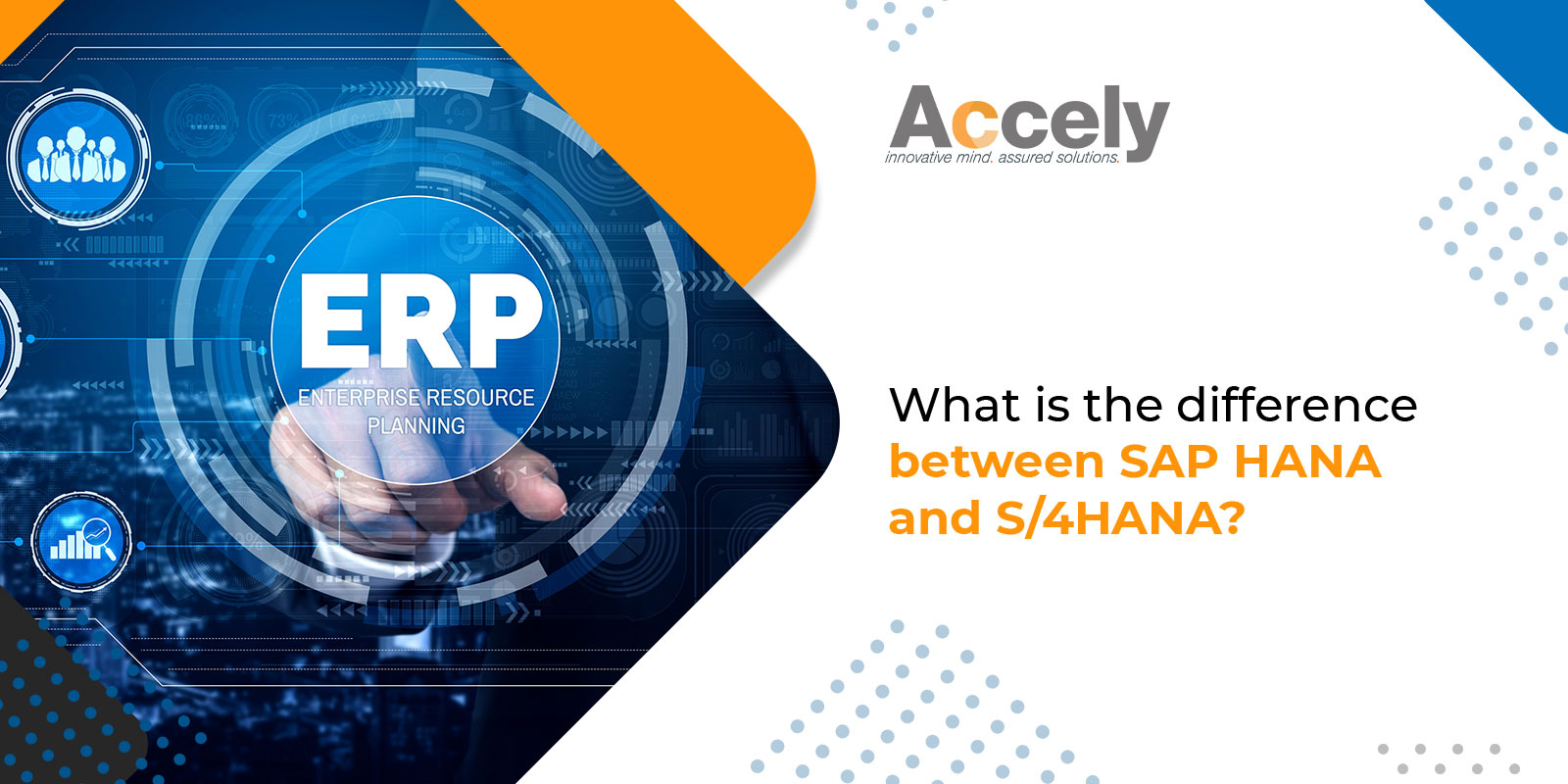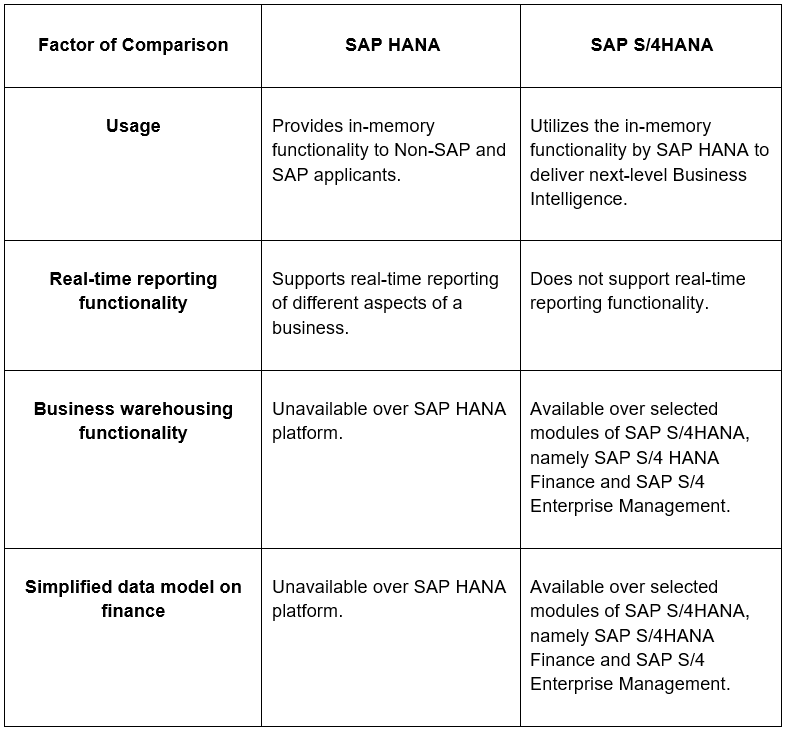What is the difference between SAP HANA and S/4HANA?
27-Apr-2021
SAP S/4 HANA has been one of the rising trends in recent years. Organizations of all shapes and sizes are trying to leverage the relatively new SAP HANA suite of business applications. However, the multiple tools under the SAP umbrella that go by similar names incur confusion. As the core products have now advanced their portfolio with offerings like the SAP HANA, SAP S/4HANA, SAP BW/4HANA, etc., potential users can easily confuse between two unique SAP offerings.
Therefore, today we deal with the most commonly asked or confused concepts that runs in the minds of a majority of SAP users who are planning their pathway to the SAP HANA or S4 HANA migration. ‘Are SAP HANA and SAP S/4 HANA same? Is S/4 HANA different? Is SAP S/4 HANA an upgraded version of SAP HANA? Have both the platforms originated from the same technology?’
Well, there is a lot to talk about, and this post is your answer to it all. Let’s take a look at the most common confusions and clear your doubts around the two unique platforms – SAP HANA and S/4HANA.
SAP HANA vs SAP S/4HANA: The Basics
SAP HANA
SAP HANA is a database that allows in-memory computing, structured to improve SAP applications’ efficiency and the integrated business processes. Serving as the backend for the SAP landscape, it is a “Relational Database Management System” (RDBMS) that is column-oriented and simplifies the data structure for improved performance.
Structured to initiate real-time visibility, higher productivity, and improved use of analytical resources, HANA stores, processes, and retrieves process data for core business activities. The platform allows organizations to determine their operations’ tasks, allowing seamless integration of different SAP applications with the HANA architecture.
Major Functionalities:
- Database Administration
- Application Development Tools
- Data Security
- Analytics and Data Processing
- Data Integration and Replication
SAP S/4HANA
The compact term for SAP Business Suite 4 SAP HANA, SAP S/4HANA is the fourth generation of SAP Business Suite. Designed to run inclusively for SAP HANA, it aims to replace the SAP ECC/ERP by 2025. For the users who have been using SAP integration in their organizations, migrating to the SAP S/4HANA is similar to transitions from the previous ERP versions (switching to SAP R/3 from SAP R/2).
The new SAP S/4HANA modules provide you with next-age Enterprise Resource Planning (ERP). The platform looks forward to simplifying data with a simple UI and similarly designed tools. Interestingly, the SAP S/4HANA allows on-Cloud deployment, on-premise deployment, and a hybrid system, thus adding to the flexibility of its buyers.
Major Functionalities:
- Artificial Intelligence
- Predictive Analysis
- Multiple Deployment Models
- Complex Data Management
- Greater Workload Capacity
SAP HANA & SAP S/4 HANA: Key Differences
To understand the basic difference between the two, read the points below:
SAP HANA is an in-memory database technology that functions effectively as the core technology for numerous other SAP or Non-SAP applications. On the other hand, the SAP S/4HANA features allow it to become a new generation of ERP solution that ensures seamless performance over SAP HANA’s database architecture.
To make it easier for you, here’s a detailed comparison in a tabular format:
Conclusion
SAP HANA and SAP S/4HANA are the two most exclusive solutions that ensure your SAP strategies’ effective management. Both the platforms have their appeal and functionality. They both add to the overall business process.
Lastly, we hope that now you are clear with the HANA approach and how both HANA and S/4HANA are entirely different tools under the SAP umbrella. Remember, when used in a well-defined manner, SAP S/4HANA brings in limitless opportunities for your organization.













